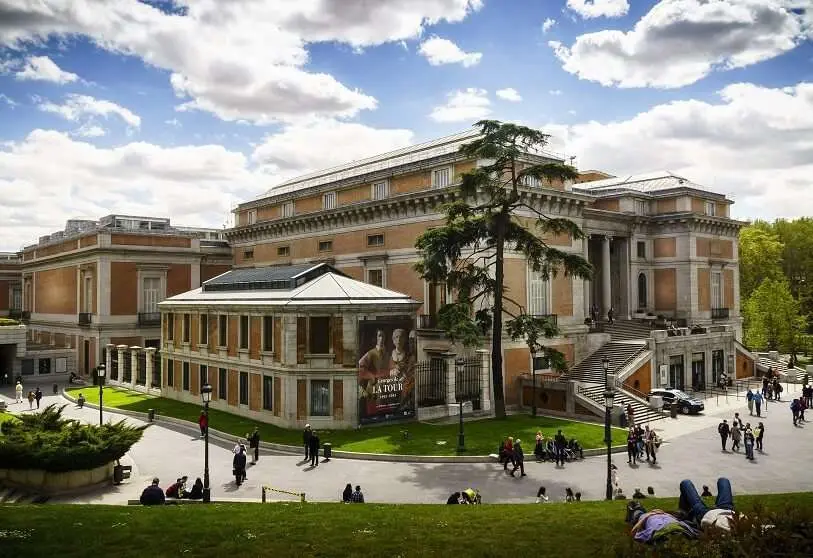UNESCO recognises that the heaven is in Madrid

"When they say 'From Madrid to Heaven' I wonder why they want heaven if heaven is already in Madrid". This was the most emphatic phrase of the Spanish ambassador to the United Nations Educational and Cultural Agency (UNESCO), Andrés Perelló, in his final plea in defence of Madrid's candidacy for World Heritage status. He did so from the headquarters of the candidacy, installed in the Prado Museum, before the delegates of the Committee in charge of approving or rejecting it, who were meeting simultaneously in the Chinese city of Fuzhou.
The "Landscape of Light", which includes the Paseo del Prado and the Retiro Gardens, thus becomes Spain's 49th monument to be listed as a World Heritage Site, and at the same time adds Madrid to the list of European capitals with historic sites worthy of recognition. This was a shortcoming that until now had negatively distinguished the Spanish capital from its counterparts in Western Europe.
To reach the final vote on 25 July, the candidacy has gone through quite a few vicissitudes. It was initially drawn up in 2014, during Ana Botella's term as mayoress of Madrid. From the outset, the Prado-Recoletos-Retiro axis was conceived as a common whole, given that since the mid-17th century both the Paseo and the Gardens were intimately linked, being also the centre of the Spanish Court for an uninterrupted period of 350 years.
The UNESCO evaluation team visited the city in 2019, and examined both the historic corners and the state of its current environment, especially the degree of contamination of the whole area. Their report was not particularly favourable, as the International Council on Monuments and Sites (ICOMOS) recommended that the Retiro Gardens be removed from the candidacy. Such a claim was always rejected by the Mayor of Madrid, José Luis Martínez Almeida, who thus backed the immovable position of the City Council's Director General of Cultural Heritage, Luis Lafuente, who used both Pedro Teixeira's plans of 1656 and the instructions of the Count-Duke of Olivares for the Prado Mall to be in reality the entrance avenue to the Retiro Gardens of the Spanish royal family.
In the final defence of the overall candidacy for this new "Landscape of Light", the joint historical and landscape value was once again emphasized. The UNESCO delegates thus learned that the Paseo del Prado was the first tree-lined promenade in a European capital, since the poplars that line it signified the first irruption of nature into an urban design, or rather, allowing nature, properly cared for and groomed, to be incorporated into the landscape of the cities instead of eradicating it completely.
Since that milestone in 1540, the Paseo del Prado has served as a model for other cities, such as the Alameda in Seville, the Alameda in Mexico and the Paseo de los Descalzos in Lima, all of which were laid out in the late 16th and early 17th centuries.
The new World Heritage seal that Madrid will henceforth be able to display will oblige it to comply with and promote the care of the entire monumental complex and its surroundings. Mayor Martínez Almeida himself has already made a commitment to the UNESCO evaluators to incorporate a list of measures designed to minimise the impact of private transport, and consequently reduce the levels of pollution that both the Retiro and the Paseo del Arte, which houses the Prado, the Thyssen-Bornemisza and the Reina Sofía, three of the great artistic jewels of the Spanish capital.
This new recognition does not alter Spain's third place behind Italy and China in terms of World Heritage monuments, but it does make up for Madrid's notable shortfall. The Community already enjoyed UNESCO recognition for the Monastery of El Escorial, the historic centres of Alcalá de Henares and Aranjuez and the jewel of nature that is the Montejo beech forest.









